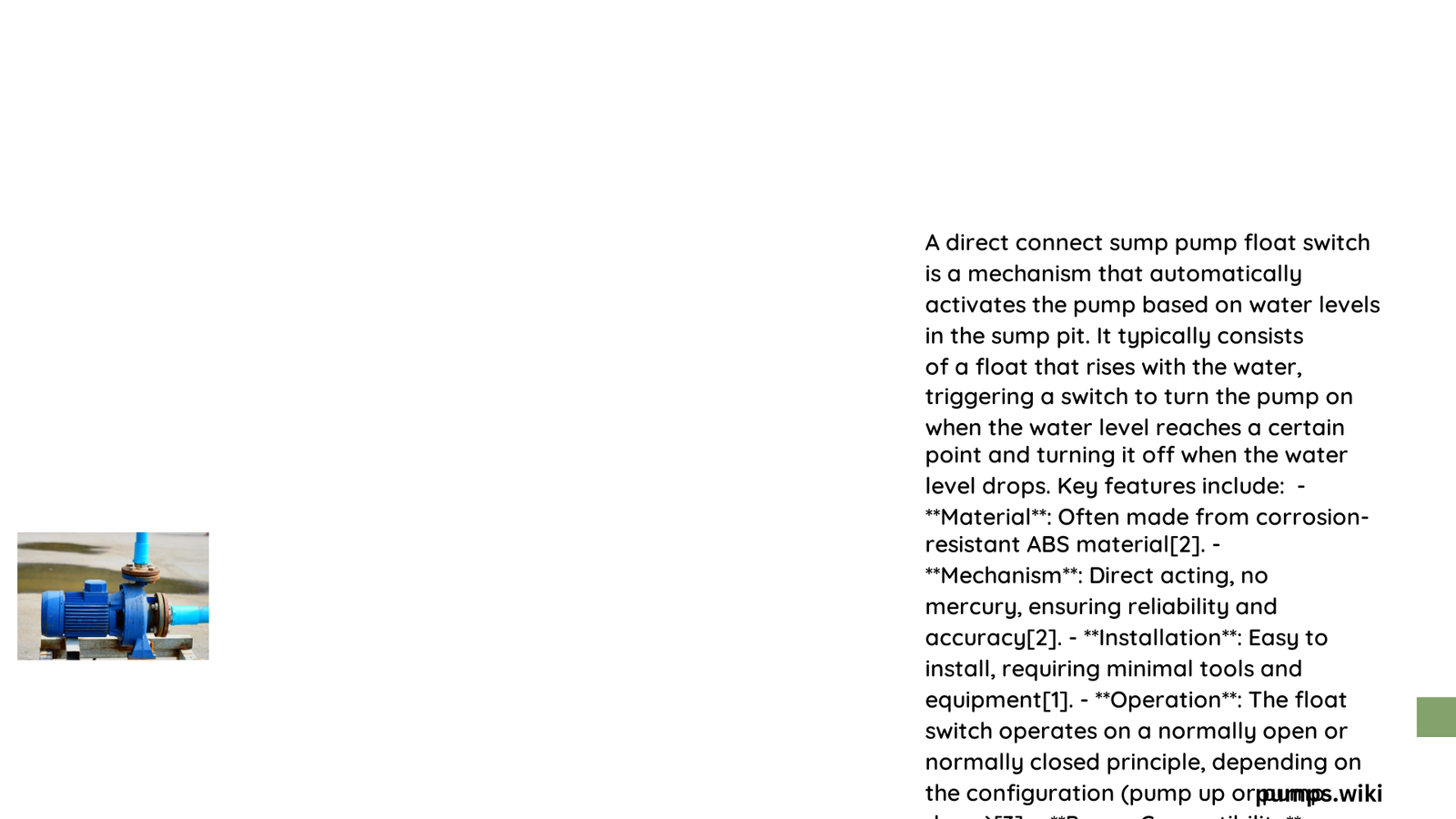A direct connect sump pump float switch is a critical mechanical device designed to automatically activate and deactivate sump pumps based on water levels in basement or crawl space sumps. This ingenious switch uses a buoyant float mechanism that rises and falls with water, triggering electrical connections to start or stop the pump, preventing basement flooding and water damage through precise, reliable water level monitoring.
What Makes Direct Connect Sump Pump Float Switch Essential?
Direct connect sump pump float switches serve as the critical control mechanism for water management systems. These devices automatically detect water levels and trigger pump activation, preventing potential basement flooding and water damage.
How Do Float Switches Operate?
Float switches function through a simple yet effective mechanism:
- Vertical Movement: As water rises, the float ascends
- Electrical Trigger: Rising float closes electrical circuit
- Pump Activation: Electrical connection starts sump pump
- Water Drainage: Pump removes excess water
- Float Descent: As water lowers, float drops
- Circuit Break: Pump automatically stops
What Are Key Technical Specifications?
| Specification | Typical Range |
|---|---|
| Voltage Rating | 120-240 VAC |
| Contact Capacity | 1/2 – 1 HP |
| Activation Height | 4-6 inches |
| Material | Polypropylene/ABS |
What Installation Considerations Exist?
Wiring Requirements
- Use piggyback plug configuration
- Ensure proper voltage matching
- Verify electrical load compatibility
- Secure cable routing
Mounting Recommendations
- Position float for unrestricted movement
- Use stainless steel clamps
- Avoid potential obstruction zones
- Maintain consistent vertical alignment
How to Troubleshoot Common Float Switch Issues?
Diagnostic Checklist
- Check electrical continuity
- Inspect physical float mechanism
- Verify voltage supply
- Test switch responsiveness
- Examine cable integrity
What Maintenance Practices Enhance Longevity?
- Regular Inspection
- Monthly visual checks
- Clean float mechanism
-
Verify smooth movement
-
Electrical Maintenance
- Test switch contacts
- Check wire connections
-
Ensure no corrosion
-
Replacement Indicators
- Inconsistent pump activation
- Physical float damage
- Electrical connection failures
What Factors Influence Float Switch Selection?
- Sump pit dimensions
- Water table characteristics
- Pump horsepower
- Voltage requirements
- Environmental conditions
Pro Tips for Optimal Performance
- Choose corrosion-resistant materials
- Select switches with wide-angle operation
- Consider foam-filled designs
- Match switch ratings precisely
- Implement periodic testing protocols
When Should You Replace Your Float Switch?
Replace your direct connect sump pump float switch when:
– Inconsistent pump activation occurs
– Physical damage is visible
– Switch fails electrical continuity tests
– Age exceeds manufacturer recommendations (typically 3-5 years)
Expert Recommendations
Professionals suggest investing in high-quality, durable float switches from reputable manufacturers. Prioritize switches with robust construction, precise electrical specifications, and proven reliability.
Final Insights
A well-selected and properly maintained direct connect sump pump float switch provides critical protection against water damage, offering homeowners peace of mind through automated water management.

